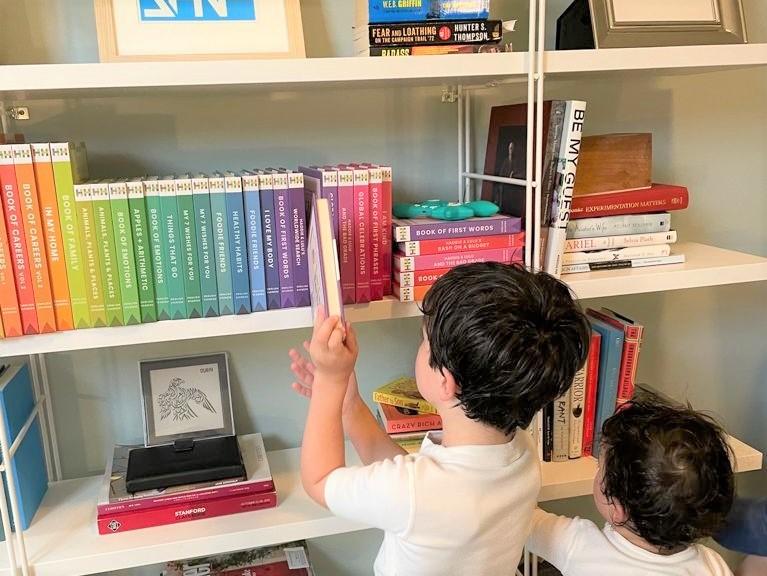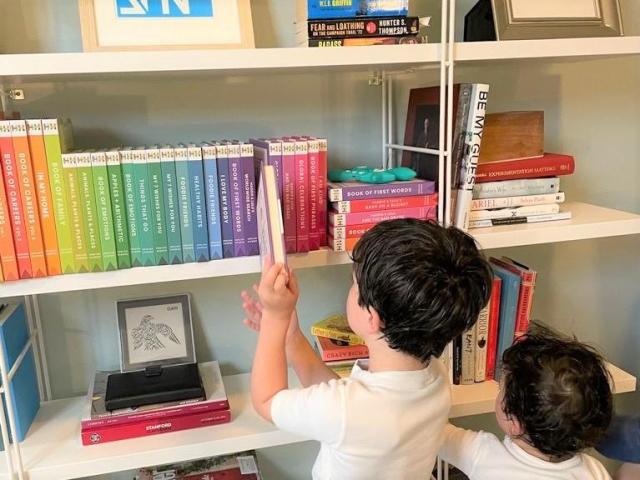
We know that being able to hire a nanny is a privilege—and finding a bilingual nanny is even more of a luxury. There are many families for whom this is not an option—whether because of expense or availability. But if you do have the desire and opportunity to hire a bilingual nanny because you want to enrich your child’s dual-language enironment, you can create a much richer environment by thoughtfully partnering with that person. Whether it’s a full time nanny, part time or nanny share (for our family, we have set up nanny shares—where we partnered with another family to “share” one nanny, both for socialization and to defray cost), here are a few ways to maximize new language skills.
1. Have an explicit conversation with your nanny about speaking in their language.
I have to admit that this is not something I thought of at first. I assumed that if my nanny spoke Spanish, she would just speak Spanish with the kids all the time. But I speak English with her, our house is filled with English books and music, we live in a predominantly English-speaking city, she speaks English, and so it’s natural that she would just use English in my home.
It’s worth thinking about what level of language exposure you are looking for when your child is in your nanny’s care. Are you comfortable with a mix of English and Spanish and letting that happen naturally? Do you want to have certain times of the day or dedicated activities that you would like to be “all in Spanish”? Or do you want as much Spanish as possible all the time—including spoken conversations, songs, books, etc.? Whatever you choose, it’s worth talking it through explicitly with your nanny. She may have some great advice from past experience, and it also allows you to be aligned on expectations.
2. Try to learn yourself (even if just a little bit), so it’s not just your nanny speaking another language.
Many folks we have interviewed have discussed how critical it is to model love and appreciation for the language you are teaching. And perhaps the most obvious way to do this is to speak the language yourself!
Even if you don’t speak it (me!), you can try learning a few vocaulary words and phrases. Don’t worry if your accent is not perfect! This is more about showing that you value the target language vs. you being the pronunciation teacher. For example, our nanny makes eggs for the kids every morning. We talk about huevos instead of eggs and say ¿Quieres comer? Instead of Do you want to eat? I also try to repeat phrases our nanny uses frequently with the kids like ¿Qué pasó? (What happened?) and ¡Hasta mañana! (See you tomorrow!). Another fun activity to help us all learn was decorating and hanging these fun printables of household objects.
3. Keep foreign language books at home for your nanny to regularly read from.
Building a collection of children’s books—however small or large—is, for me, one of the most magical parenting responsibilities. But being an English-speaking family, I did not instinctively start with any Spanish books. As soon as we had the Habbi Habbi books at home, our nanny naturally gravitated to them, reading them to our son in Spanish. It seems so obvious in hindsight—if I wanted her to read to the kids in Spanish, I needed to provide the materials! You may want to ask your nanny for recommendations to add to your collection or provide a library card so she can select some herself.
As a side note, I’m so inspired by other moms’ libraries. For example, Valicia and Eveline are huge proponents of multilingual exposure and have amazing libraries filled with Spanish, Japanese, Korean, Chinese, French, and more.
4. Seek out foreign language classes and storytimes for your nanny to bring your child to.
Before the pandemic, our nanny took the kids to music classes and storytime at the library. The kids loved it and we loved the exposure to music and stories! It may take a little extra research, but many libraries, bookstores and music programs offer neighborhood classes in foreign languages. Your local children’s museum or zoo may also offer activities in another language. Again, this is a great conversation to have with your nanny, as she may already know the best local classes and programs.
5. Find inspiration from food—whether cooking or visiting restaurants and cafes.
In our family, we love to cook and explore foods from all over the world. Food is one of our favorite reasons to travel, and—much like language—a critical part of cultural identity. So it makes sense for us to celebrate it at home, too.
Our first nanny was originally from Brazil and would take the kids to the Mercado Brasil in our neighborhood to get pão de queijo (still my son’s favorite!). In addition to building a very strong affinity for delicious Brazilian cheese bread, it also gave him an opportunity to hear more people speaking Portuguese together, since the shop was very popular among Brazilians in San Francisco. Our second nanny was originally from El Salvador and was an incredible cook (who loved feeding everyone!). She would make arroz y frijoles (rice and beans) and homemade tortillas for the kids, and green (unripened) mango (which I had never tried before and is so yummy).
There are so many ways to reinforce language and cultural context around food (which is also just delicious and thus creates an association of joy!). You may want to ask your nanny to incorporate Latin foods into your child’s diet, teach them the names in Spanish, talk about the regions they come from or the importance of the dish.
By Anne-Louise of Habbi Habbi











